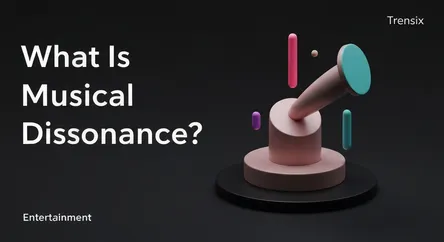Entertainment
What Is Musical Dissonance?

Explore musical dissonance, the use of clashing notes to create tension and emotion. Learn why this key music theory concept is trending in modern music.
What is it?
In music, dissonance is the use of notes that sound unstable or clashing when played together. It is the opposite of consonance, which sounds stable and pleasant. Dissonance creates a sense of tension that seeks resolution, pulling the listener toward a more harmonious chord. Composers use this tension-and-release dynamic as a powerful tool to build suspense, add emotional color, and guide the narrative of a musical piece. It is the essential conflict that makes the eventual harmony feel more satisfying and complete.
Why is it trending?
Dissonance is trending because modern artists are increasingly using it to create more complex and emotionally resonant music. From Billie Eilish's haunting pop to the intricate harmonies in jazz and metal, listeners are embracing sounds that challenge traditional pop formulas. The concept has also been popularized on social media, where creators analyze hit songs, revealing the clever use of dissonant chords to the mainstream. This has demystified music theory and fostered a new appreciation for the sophisticated techniques behind popular music.
How does it affect people?
Dissonance elicits a strong psychological response, often creating feelings of unease, anticipation, or excitement. This effect is used strategically in film scores to build suspense and amplify on-screen drama. For the listener, the journey from a tense, dissonant sound to a stable, consonant one provides a powerful sense of emotional release and satisfaction. This interplay makes music feel more dynamic and engaging, turning a passive listening experience into an active emotional journey that mirrors storytelling's use of conflict and resolution.